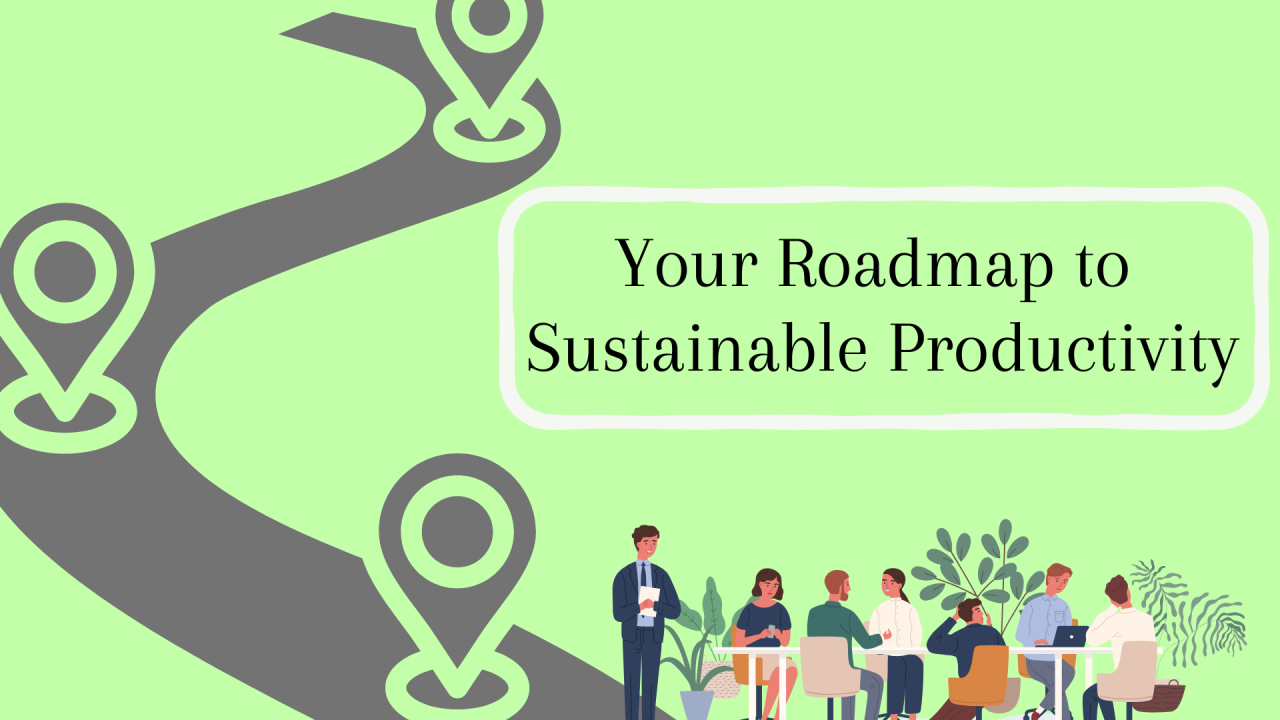Achieve More Without Burnout –
In today’s fast-paced world, productivity often feels like a never-ending race. Tasks pile up, to-do lists grow longer, and despite constant effort, meaningful progress can feel elusive. The key isn’t just about doing more—it’s about doing what truly matters. This is where SMART goal setting comes in.
But to achieve long-term success, it’s essential to take a sustainable approach to goal setting—one that nurtures productivity while safeguarding mental well-being and energy.
Understanding SMART Goals
SMART goals are designed to transform broad ambitions into achievable actions. The framework emphasizes:
- Specific: Define clear and focused goals.
- Measurable: Track progress with measurable outcomes.
- Achievable: Set realistic yet challenging targets.
- Relevant: Align goals with larger objectives.
- Time-bound: Establish deadlines to maintain momentum.
When these principles are combined with a sustainable mindset, they lead to lasting productivity and balanced growth.
Redefining SMART Goals with a Sustainable Lens
Here’s how organizations and individuals can adapt SMART goals to foster long-term success without compromising well-being:
1. Specific: Define Clear and Balanced Goals
Being specific eliminates ambiguity and ensures focused effort. However, sustainable goals go a step further by integrating balance into the equation.
- Traditional Goal: “Increase client acquisition.”
- Sustainable Goal: “Onboard 3 new clients in the next quarter while maintaining work-life balance.”
✅ Why it works: This approach ensures clarity while acknowledging the importance of maintaining equilibrium, preventing burnout.
💡 Best Practice: Break larger goals into smaller, manageable sub-goals. For instance, client acquisition can be broken down into identifying prospects, scheduling meetings, and crafting proposals.
2. Measurable: Track Progress to Maintain Momentum
Establishing measurable criteria helps track progress and boosts motivation. Sustainable measurement ensures that progress is evaluated not just by outcomes but also by the impact on overall well-being.
- Traditional Goal: “Exercise more frequently.”
- Sustainable Goal: “Walk for 30 minutes, 5 days a week, and track steps using a fitness app.”
✅ Why it works: Measurable goals provide tangible feedback, allowing adjustments while maintaining steady progress.
💡 Best Practice: Utilize project management tools or performance tracking systems to measure progress consistently.
3. Achievable: Set Realistic Yet Challenging Goals
While ambition is essential, goals that stretch too far often lead to frustration and fatigue. A sustainable approach focuses on setting goals that are challenging yet realistic.
- Traditional Goal: “Complete a major project in a month.”
- Sustainable Goal: “Dedicate 2 hours daily to the project, aiming to complete a draft within 3 weeks.”
✅ Why it works: Achievable goals reduce the risk of burnout by ensuring that targets align with available time, energy, and resources.
💡 Best Practice: Assess current capabilities and constraints before finalizing goals, ensuring they are both ambitious and attainable.
4. Relevant: Align Goals with Long-Term Objectives
Sustainable goal setting requires aligning tasks with broader career or organizational priorities. Pursuing goals that resonate with long-term values prevents the dilution of focus.
- Traditional Goal: “Attend multiple networking events.”
- Sustainable Goal: “Attend 2 events this month that align with strategic objectives and growth plans.”
✅ Why it works: Relevant goals ensure that every effort contributes meaningfully to long-term aspirations.
💡 Best Practice: Regularly review goals to ensure alignment with evolving business or personal priorities.
5. Time-bound: Establish Realistic Deadlines for Consistency
Deadlines create accountability and prevent goals from becoming open-ended. A sustainable approach to time-bound goals ensures that timelines promote consistency rather than urgency-driven stress.
- Traditional Goal: “Finish this project soon.”
- Sustainable Goal: “Complete the first draft by the end of the week and finalize it by next Friday.”
✅ Why it works: Realistic deadlines instill a sense of urgency while leaving room for flexibility and refinement.
💡 Best Practice: Break larger deadlines into smaller milestones to maintain momentum and manage workload effectively.

Pro Tips for Sustainable Goal Setting
- Celebrate Small Wins: Acknowledge incremental progress to reinforce positive habits and maintain motivation.
- Prioritize Rest and Recovery: Sustainable productivity thrives on a well-rested mind. Integrate downtime into goal-setting frameworks.
- Embrace Flexibility: Adjust goals when circumstances change, allowing room for adaptation without compromising long-term progress.
- Incorporate Regular Feedback: Evaluate outcomes periodically and refine goals to optimize effectiveness.
Sustainable Productivity: A Long-Term Strategy
Sustainable goal setting isn’t about sprinting to the finish line. It’s about building momentum that lasts. By integrating sustainability into SMART goals, individuals and organizations can achieve meaningful progress without sacrificing well-being.
At SustainEra Being Humanely Resourceful LLP, we believe that success is built on balance, resilience, and long-term vision. Through sustainable practices, productivity becomes a journey that fosters growth—without burning out along the way.
Burned out from chasing vague goals?
Let us help you build a SMART goal map that honours your energy. Contact Us
#SustainableHR #SustainablyResourceful #BeingHumanelyResourceful


